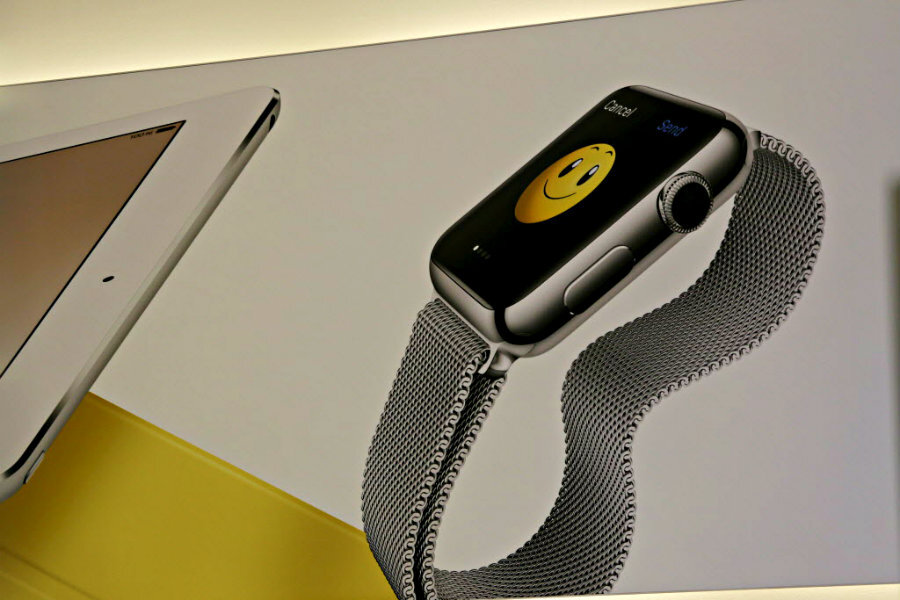Is the Apple Watch a bust? Wall Street still undecided.
| SAN FRANCISCO
Apple's latest financial report shows iPhone sales are still surging, driven partly by growth in China. But it also contains hints that Apple's much-vaunted smartwatch may not be selling as fast as Wall Street expected.
The California tech giant sold more than 47.5 million iPhones during the three months ending in June, or 35 percent more than a year ago. That sent Apple's profit soaring nearly 38 percent for the quarter, to $10.7 billion.
But a lukewarm forecast for the current period, combined with uncertainty over the new Apple Watch, helped drive Apple shares down more than 6 percent in late trading Tuesday night.
While the iPhone is the engine of Apple's current success, many analysts and investors see the sleek new smartwatch as an important indicator of the company's ability to produce new products. CEO Tim Cook said Tuesday that watch sales outpaced initial sales of the iPhone and iPad during the first nine weeks after their launch.
Apple has previously said it sold 1 million iPhones in the first 74 days, or more than 10 weeks, after sales began in 2007. Apple has said it sold 2 million iPads in the first 60 days, with iPad sales hitting 3 million in 80 days after the iPad was launched in 2010. Analysts surveyed by FactSet had expected Apple to sell 4 million watches in the quarter.
Cook, however, declined to be more specific, saying he didn't want to give Apple's competitors any insights into the new product.
"Sales of the watch did exceed our own forecasts," Cook told analysts on a conference call, adding that demand outpaced supply in the early weeks. He said watch sales in June were greater than in May or April, when the watch first became available.
Some analysts noted that Apple reported $2.6 billion in revenue from the company's "Other Products" segment, which includes the watch. That's about $952 million more than the previous quarter, when the watch had not yet gone on sale, or significantly less than the $1.8 billion in watch sales that analysts surveyed by FactSet were expecting.
But Chief Financial Officer Luca Maestri told The Associated Press that revenue from the watch amounted to "well over" that $952 million increase. He said the watch sales were offset by declining revenue from iPods and accessories, which are also lumped into that segment.
Apple's quarterly revenue from all sources grew 33 percent from last year to $49.6 billion in the April-June quarter, with the iPhone contributing $31.4 billion in sales. Net income climbed nearly 38 percent to $10.7 billion, while earnings amounted to $1.85 per share.
That beat the estimates of Wall Street analysts surveyed by FactSet, who were expecting Apple to report earnings of $1.81 per share on sales of $49.25 billion.
Apple got a big boost from new markets like China, which contributed more than a quarter of the company's revenue, or $13.2 billion. China sales more than doubled from a year ago.
The company is also benefiting from its decision to offer bigger screens with the iPhone 6 and 6 Plus, which is helping to lure consumers away from competing phone makers that started selling bigger-screen devices a few years earlier.
Apple sold more iPhones than the 47 million expected, on average, by analysts surveyed by FactSet. But in a sign of Wall Street's high expectations, some analysts said they were looking for sales of up to 49 million.
Analysts also worry about whether Apple can sustain its recent growth. In the coming months, it will face more difficult comparisons against the surge in sales that followed the iPhone 6 launch last September.
The company said Tuesday that it's expecting between $49 billion and $51 billion in revenue for the quarter ending in September. The mid-point of that range is below the average analyst estimate of $50.8 billion.
Meanwhile, many Apple-watchers were keen to hear more about the company's newest gadget. While not expected to be a major revenue source now, the AppleWatch has symbolic importance as the first new product category that Apple has launched since the 2011 death of co-founder and iconic CEO Steve Jobs.
"When you look at the next big wave of innovation, in coming years, it's not going to come from smartphones," said analyst Angelo Zino of S&P Capital Markets, who said phones are already becoming "commodity" items, even with Apple dominating the high end of that market. "So a lot of people want to see if Apple can roll out a new product that's very successful and innovative.
Maestri acknowledged that Apple has released detailed sales figures for other products, but he said the company wanted "to be careful" with information about the watch, to avoid tipping competitors as Apple learns more about consumer demand for a new product.
"We know that, for us to be successful, we need to innovate all the time," he added. "But when you look at what we've launched in the last 12 months, I think you can conclude that we're in great shape from the innovation standpoint."
Besides the Apple Watch, Apple has released new models of other devices and launched its Apple Pay electronic payments service last fall and a streaming music service this month.








